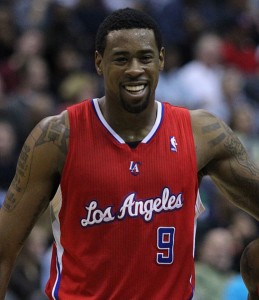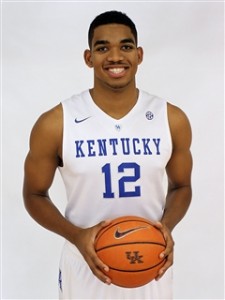
 The salary cap rose to $70 million for the 2015-16 season, an increase of 11 percent and nearly $7 million from a year ago, the NBA announced Wednesday night.
The salary cap rose to $70 million for the 2015-16 season, an increase of 11 percent and nearly $7 million from a year ago, the NBA announced Wednesday night.
The cap for next season originally was projected around $67.1 million. Shortly before free agency began, however, CBS Sports reported that the number would be at least $1 million higher and perhaps as much as $2 million higher.
In fact, it is $3 million higher, the sort of anecdotal information that will make it hard for NBA owners to claim financial hardship at the next labor negotiations, which likely are two years away.
A year ago, the cap rose from $58.679 million to $63.065 million, an increase of 7.4 percent or $4.386 million. That means that over the last two years, the cap – which is determined by a percentage of all basketball-related income, or BRI – has increased more than 19 percent. That’s in the two years before the money arrives from the new TV deal.
Here are other new financial benchmarks:
- The new luxury tax threshold is $84.74 million, an increase of 10.3 percent. Last year it was $76.829 million. Already over the tax line or headed there are Oklahoma City, Brooklyn, Chicago, Miami, Cleveland and NBA champion Golden State.
- The new salary floor is $63 million, which is 90 percent of the salary cap. A year ago it was $56.759 million. A handful of teams are below the floor but have until the end of the 2015-16 season to get there. Denver and Orlando finished the 2014-15 season below the floor. That’s right, not Philadelphia.
- The new mid-level exception is $5.464 million. Last year it was $5.305 million.
- The new mini-mid-level exception – for teams above the tax threshold – is $3.376 million. A year ago it was $3.278 million.
- The new room exception – for teams below the cap – is 2.814 million, up from $2.732 million last year.
 Those three exceptions are not tied to the salary cap; rather, they were established when the current CBA was ratified in late 2011. That is why they have not grown at the same rate as the cap.
Those three exceptions are not tied to the salary cap; rather, they were established when the current CBA was ratified in late 2011. That is why they have not grown at the same rate as the cap.
According to multiple reports, the maximum salaries will be $16.407 million for players with 0-6 years of service, such as Jimmy Butler; $19.689 million for players with 7-9 years of service, such as DeAndre Jordan; and $22.970 million for players with 10 or more years of service, such as LeBron James.
RELATED: Sheridan Hoops Team Salary Index
Those numbers are roughly 25, 30 and 35 percent of the salary cap, although the CBA uses a different, lower cap figure to compute maximum salaries.
This will be a far more interesting post a year from now, when the salary cap will take a quantum leap to nearly $90 million due to the start of the league’s new nine-year, $24 billion TV contract. The NBA wanted to “smooth in” the dramatic revenue increase but the Players Association declined.
In the summer of 2017, the cap will have another huge increase to an estimated $108 million. But first there may be the small matter of a lockout or strike, as both the owners and the union have the right to opt out of the CBA.
Two other sets of numbers not impacted by the new cap are the salary tables for first-round draft picks and  veterans.
veterans.
The minimum salary for an NBA player is $525,093. That is what most second-round picks and undrafted rookie free agents will make this season. Minimums increase based on years of service up to $1,499,187, which is the minimum for anyone who has played at least 10 years.
The rookie salary scale will pay top overall pick Karl-Anthony Towns of Minnesota more than $5.7 million this season. For the first time in the history of the rookie scale, the top pick’s fifth-year qualifying offer will break eight figures. Using the 120 percent bumps that most first-round picks receive on their first three years, Towns’ qualifying offer for 2019-20 will be $10.191 million.